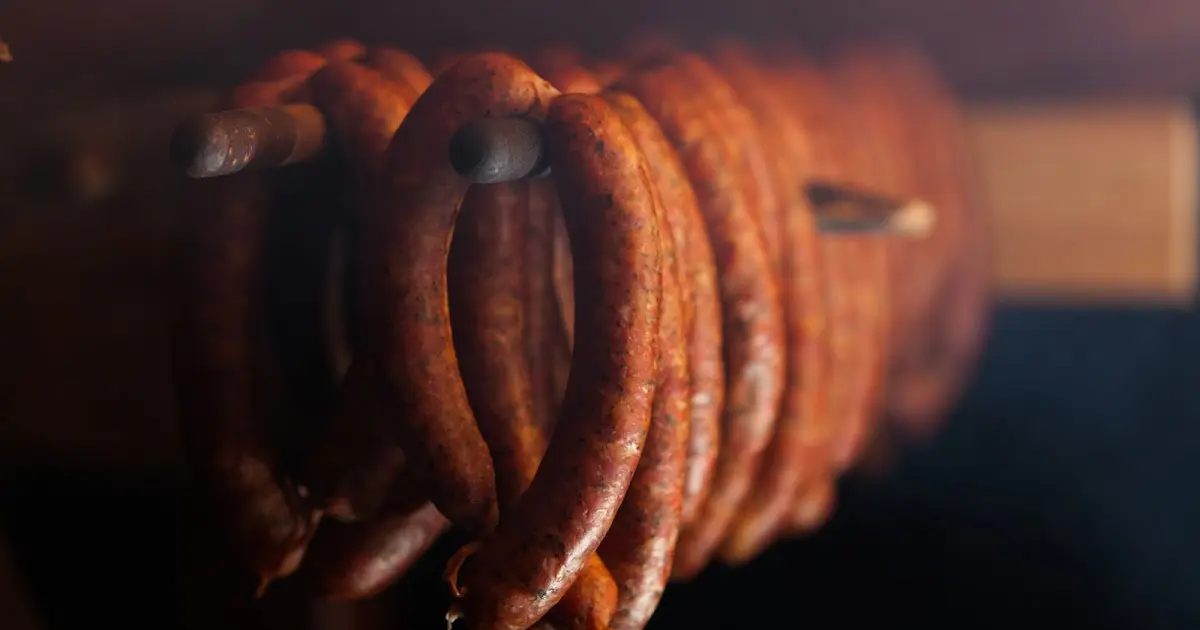Smoked sausage casing, also known as sausage skin or casing, is the material that encloses the filling of a sausage. It plays a crucial role in the production of sausages, providing structure and shape to the final product. In this article, we will explore the different types of smoked sausage casing, including natural casings made from animal intestines or skin, as well as artificial casings made from collagen and cellulose.
Natural Casings
Origin and Appearance
Natural casings are primarily made from the sub-mucosa of the small intestine of meat animals. This layer of the intestine mainly consists of naturally occurring collagen. In Western European and Chinese cuisine, casings are commonly derived from pigs, while sheep, goats, cattle, and sometimes horses are also used in other regions. The casings undergo a thorough cleaning process, which involves flushing, scraping, and cleaning with water and salt to remove any impurities. The outer fat and inner mucosa lining are also removed. Natural casings have a distinct irregularity compared to artificial casings, although high-quality sheep and lamb casings can be almost indistinguishable from collagen casings.
Processing and Packaging
The process of producing natural casings begins at the slaughter plant, where uncleaned casings are removed from the animal during the slaughter process. These casings are then cleaned, usually with the help of machinery, breaking the inner mucosa and flushing out any remaining impurities. After cleaning, the casings are tied in bundles and packed in plastic drums filled with a saturated salt brine for preservation. Natural casings are usually sold in hanks, which are units of measure that are 91 meters long. Each hank contains a varying number of strands, which can range in length from 2 to 28 meters. The casings are graded by hand for size, which is measured in millimeters and refers to the diameter of the casing.
Artificial Casings
Collagen Casings
Collagen casings are mainly produced from the collagen found in beef or pig hides, bones, and tendons. They have been in use for over 50 years and have gained popularity due to their lower cost and ease of use compared to natural casings. Collagen casings are formed by extrusion through a die to the desired diameter and then dried and shirred into short sticks. They can be edible or non-edible, with edible collagen casings being more tender than natural casings. Edible collagen casings are commonly used for products like salamis and large-caliber sausages, where the casing is usually peeled off by the consumer.
Vegetarian Casings
In recent years, innovative coextrusion processes have allowed for the creation of 100% plant-based vegetarian casings. These casings are suitable for halal or kosher food making and require special alginate coextrusion equipment.
Inedible Casings
Cellulose and plastic casings are considered inedible and are typically peeled off food products before consumption. Cellulose casings are made from processed cellulose, usually derived from cotton linters or wood pulp. They are used for making skinless franks and large-diameter fibrous casings for products like bologna and smoked ham. Plastic casings, on the other hand, are made from polymers such as polyamide, polypropylene, or polyethylene. They are commonly used for non-smoked products where high yields are expected, as they do not allow smoke or water to pass through.

Frequently Asked Questions
- Is the skin on smoked sausage edible?
- Does smoke penetrate sausage casing?
The skin on smoked sausage can be edible or inedible, depending on the type of casing used. Natural casings are generally edible, while artificial casings made from collagen or cellulose are usually not intended for consumption.
Smoke can penetrate both natural and artificial casings, adding flavor and aroma to the sausage. However, the extent to which the smoke penetrates the casing may vary depending on the type of casing used.
In Conclusion
Smoked sausage casing is an essential component of sausage production, providing structure and shape to the final product. Natural casings made from animal intestines or skin offer a traditional and authentic appearance, while artificial casings made from collagen or cellulose provide convenience and cost-effectiveness. Whether you prefer the irregularity of natural casings or the ease of use of artificial casings, both options contribute to the deliciousness of smoked sausages.
If you want to know other articles similar to Guide to smoked sausage casing: types & usage you can visit the Casing category.

